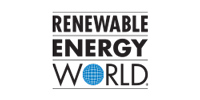 Tesla (NASDAQ:TSLA) CEO Elon Musk’s update on the electric-car maker’s business on Tuesday afternoon at the company’s annual shareholder meeting obviously impressed investors. The stock surged higher on Wednesday, finishing the trading day up nearly 10%.
Tesla (NASDAQ:TSLA) CEO Elon Musk’s update on the electric-car maker’s business on Tuesday afternoon at the company’s annual shareholder meeting obviously impressed investors. The stock surged higher on Wednesday, finishing the trading day up nearly 10%.
For the most part, headlines after the meeting seemed focused on Musk confirming that the automaker is on track with its production and profitability plans. Of course, there’s good reason to believe the news that Tesla is on track to achieve a production rate for its Model 3 of 5,000 units per week by the end of June and GAAP profitability in both Q3 and Q4. Production delays have previously plagued the Model 3 as Tesla attempts to transform into a mass-market auto company, which has weighed on profitability. But another narrative discussed during the shareholder meeting is worth examining: Tesla’s surging energy storage business.
What Musk said about Tesla’s energy storage business
Musk was extremely optimistic about Tesla’s energy storage business, implying energy storage sales will see wild growth at rates that exceed the sharp growth in Tesla’s vehicles sales.
Launched just three years ago, its energy storage business has already swelled to a total of 1 gigawatt-hours of energy storage deployments globally as of May, Musk said during the shareholder meeting. He also said he expects that in “less than a year from now” Tesla will deploy another GWh of energy storage.
But this is just the beginning, according to Musk. “I think for many years to come, each incremental year will be about as much as all of the preceding years [in terms of energy storage deployments],” the CEO predicted.
Furthermore, he said deployments are ultimately limited by production, which is notable since Tesla’s Gigafactory has morphed into the world’s highest-volume battery factory when measured by battery capacity output.
Musk put the extraordinary demand for energy storage and the scale of the Gigafactory’s output into perspective:
read moreWe would actually be able to do more if we could produce more. And we are producing a lot of batteries. So in fact, next quarter, at the Gigafactory, we expect to make more battery capacity than all other EVs combined worldwide, including China. So I mean, this is a really crazy amount of batteries. This one factory is making — will make more than all the other factories on earth…

 San Diego Gas & Electric (SDG&E) has obtained approval to add 83.5 MW of energy storage facilities in California, the power utility said on Monday.
San Diego Gas & Electric (SDG&E) has obtained approval to add 83.5 MW of energy storage facilities in California, the power utility said on Monday. As the electric car (and truck and bus and heavy equipment) revolution sweeps across Europe, policymakers and investors are divided on whether the EU should push an aggressive strategy of constructing lithium-ion battery factories or just let the companies from China, Japan, and South Korea do the heavy lifting while Europe pivots toward next-generation batteries. In fact, with the push from Asian companies already well underway and Northvolt the only European company actually building a new battery factory on the continent at the present time, it may already be too late for the EU to catch up.
As the electric car (and truck and bus and heavy equipment) revolution sweeps across Europe, policymakers and investors are divided on whether the EU should push an aggressive strategy of constructing lithium-ion battery factories or just let the companies from China, Japan, and South Korea do the heavy lifting while Europe pivots toward next-generation batteries. In fact, with the push from Asian companies already well underway and Northvolt the only European company actually building a new battery factory on the continent at the present time, it may already be too late for the EU to catch up. Remember when U.S. states started voting renewable portfolio standards (RPS) into law? Iowa had the first and it was passed in 1983 requiring investor-owned utilities to build or procure 105 MW of alternative energy generating capacity. (Funny how small that amount is — 105 MWs would not even qualify as a “large” wind farm today).
Remember when U.S. states started voting renewable portfolio standards (RPS) into law? Iowa had the first and it was passed in 1983 requiring investor-owned utilities to build or procure 105 MW of alternative energy generating capacity. (Funny how small that amount is — 105 MWs would not even qualify as a “large” wind farm today). When Vaclav Smil writes about energy, the world pays attention. “I wait for new Smil books the way some people wait for the next Star Wars movie,”
When Vaclav Smil writes about energy, the world pays attention. “I wait for new Smil books the way some people wait for the next Star Wars movie,”  The UK is pioneering a new way to store power with the world’s first grid-scale liquid air energy storage plant.
The UK is pioneering a new way to store power with the world’s first grid-scale liquid air energy storage plant. Tesla, it’s been said, is less a car company than a battery company that sells cars. Today, the company is announcing a new milestone: Since 2015, it has installed a worldwide total of a gigawatt-hour of energy storage–technology that is critical for using renewable energy at scale. For comparison, that’s nearly half of the entire amount of energy storage installed globally last year. As the company’s electric car business quickly grows, the energy side of its business is growing even faster.
Tesla, it’s been said, is less a car company than a battery company that sells cars. Today, the company is announcing a new milestone: Since 2015, it has installed a worldwide total of a gigawatt-hour of energy storage–technology that is critical for using renewable energy at scale. For comparison, that’s nearly half of the entire amount of energy storage installed globally last year. As the company’s electric car business quickly grows, the energy side of its business is growing even faster. Utility NV Energy has awarded contracts in the US state of Nevada for over 1,000MW of renewable energy projects – including a 420MW-dc solar farm – and has also requested approval for 100MW of energy storage.
Utility NV Energy has awarded contracts in the US state of Nevada for over 1,000MW of renewable energy projects – including a 420MW-dc solar farm – and has also requested approval for 100MW of energy storage. Battery technologies are all the craze these days as everyone is racing to find the perfect solution to energy storage for the growing share of solar and wind power in the grid.
Battery technologies are all the craze these days as everyone is racing to find the perfect solution to energy storage for the growing share of solar and wind power in the grid. Swedish energy giant Vattenfall has found a way to further cut the cost of grid-scale energy storage: share the infrastructure with a wind farm.
Swedish energy giant Vattenfall has found a way to further cut the cost of grid-scale energy storage: share the infrastructure with a wind farm.
Recent Comments